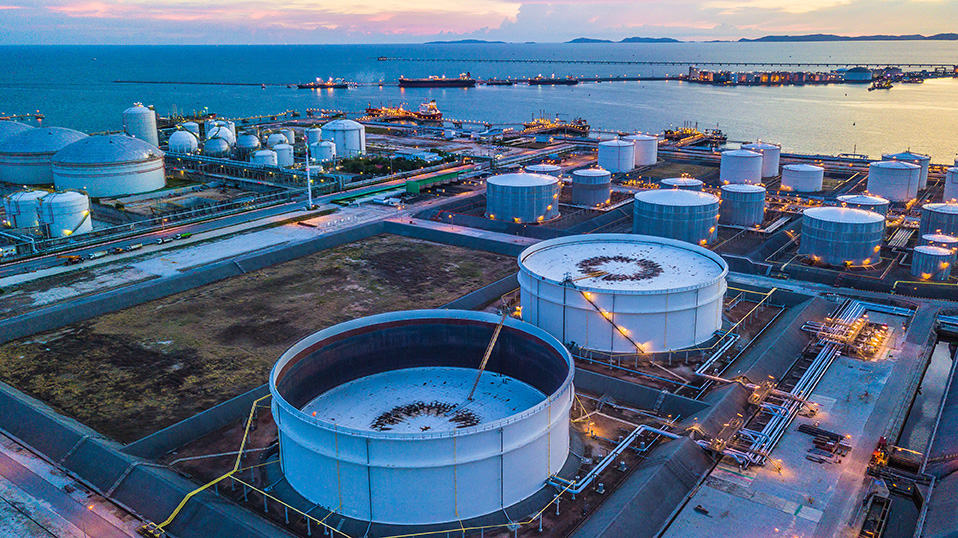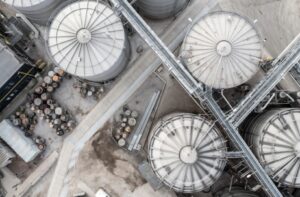Storage tanks are used to hold a variety of organic liquids or gases including raw materials, intermediates, final products and usable byproducts. Although mainly used in the oil and gas industry, other industries often rely on upright storage tanks to temporarily store liquids (eg food and fertilizer industry).
Tanks can vary in design and the properties of the products being stored determine the storage temperature and if additional heating is necessary to maintain a certain temperature inside. In the case of heated storage tanks, this often has to do with preserving the quality of the stored product and preventing solidification of the hot liquid.
Why does energy efficiency matter?
The growing worldwide demand for chemical products and proper storage and handling makes energy efficiency of storage tanks a key requirement. This, combined with the all-time high energy prices, forces storage terminals and processing facilities to rationalise their energy consumption and improve the efficient use of energy sources.
Each year, large amounts of energy are wasted due to storage tanks not having proper insulation systems in place. This used to be negligible, but the current economic environment is demanding facilities rethink the way energy is wasted.
Energy losses in heated storage tanks
When storage tanks operate above ambient conditions, the tank walls and roofs are often viewed as the main sources of energy loss. However, the heat loss at tank walls and roof will fluctuate when the liquid level increases or decreases. But heat lost through the bottom of a storage tank will always remain constant.
Depending on the storage temperature and tank size, heat loss through the tank bottom can run up to >250 W/m² (80 BTU/h•ft²) leading to large yearly energy losses that would accumulate to hundreds of thousands of euros over the lifetime of the tank.
What about carbon emissions?
Globally, heat accounts for nearly half of energy-related carbon emissions. Therefore, losing large amounts of heat leads to high amounts of unnecessary carbon emissions for your facility. In times when processing facilities and terminals are focusing on reducing their overall carbon footprint, it is inevitable that every opportunity to reduce heat losses and corresponding emissions should be grasped fully.
How to tackle this issue?
One of the easiest and most cost-effective ways to immediately tackle this issue is to install a cellular glass insulation system underneath your heated storage tank. Insulating the tank base can immediately reduce the heat loss through the bottom up to 90%. The insulation value of cellular glass insulation also does not change during its lifespan, which helps to ensure constant and lasting energy savings. This allows for easy calculation of the yearly energy savings, payback periods, annual financial yields and, saved emissions over the lifetime of the tank.
Calculated payback periods and annual yields
Tank builders and terminal owners can call on the expertise of Owens Corning’s technical services team to assist with the calculation of payback periods and annual yields of the investment in a FOAMGLAS HLB insulation tank base insulation system.
These calculations consider all relevant factors such as temperatures and local energy prices. For each project, the heat lost through the base without insulation is calculated and compared with the total investment cost. This provides the total payback period of the investment in a FOAMGLAS tank base insulation system, which can be as short as merely months depending on the storage temperature of the contained liquid.
In addition, the total future yield of the investment is calculated for the active life of the tank with an insulated tank base. This shows the amount of energy saved per area of insulated tank base, and the total yield per year after the payback period.
What about my existing tanks?
This, of course, is a no-brainer when new tanks are going to be built but what about existing tanks? Dedicated tank base insulation systems can easily be installed during scheduled tank maintenance programs when the tank is emptied to inspect the metal tank bottom and possible metallurgic repairs are being done.
This can be done by lifting the tank and positioning it on jacks. This gives the opportunity to install a tank base insulation system onto the concrete deck before the tank is lowered again. Another possibility is to install the insulation directly onto the metal base inside the tank and weld a new metal bottom onto the newly installed insulation system.
Hungry for more? The Owens Corning team are hosting Tank Talk on 22 June at 15:00 CET. Register now and don’t miss this expert-led webinar.











